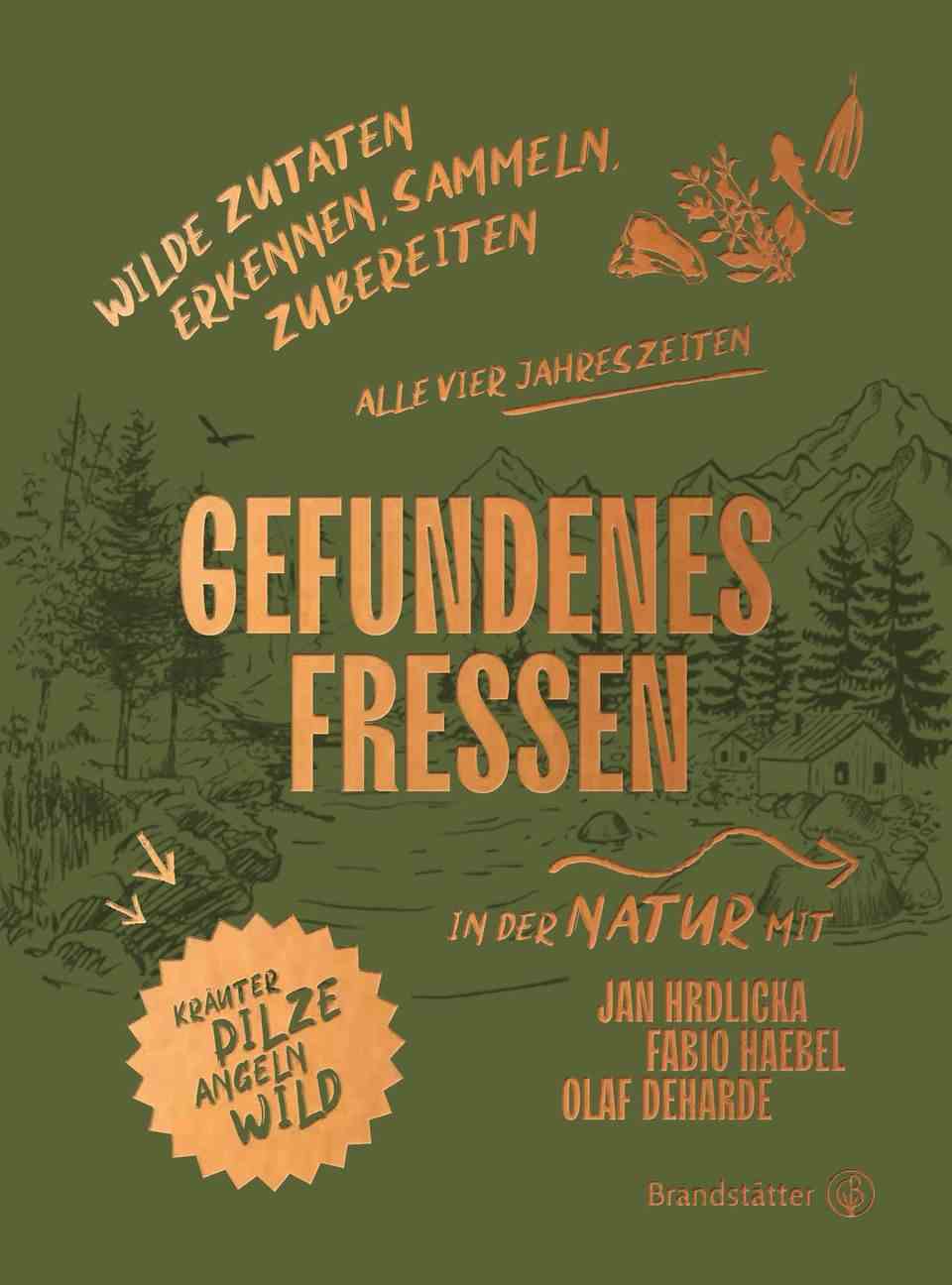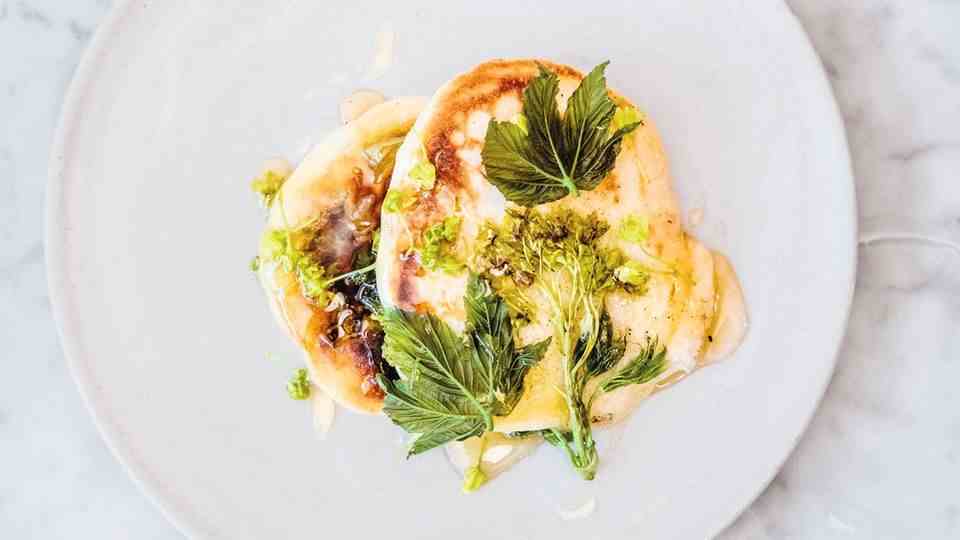cookbook
Found food: Three restaurateurs cook with everything they find along the way
Jan Hrdlicka, Fabio Haebel and Olaf Deharde (from left to right) have written a cookbook about “Found Food”.
© Brandstätter
Tim Mälzer writes in the foreword that we are surrounded by wild foods. But where do you start? Preferably right in front of the front door. Three restaurateurs have written a cookbook about how to look for wild foods, find them and then cook them deliciously.
Jan is fishing. Olaf collects. Fabio cooks sustainably and seasonally.
The three are no strangers to the Hamburg gastronomy scene. Some time ago, Jan Hrdlicka, Olaf Deharde and Fabio Haebel decided to change their consumer behavior. Today, Hrdlicka supplies his family exclusively with self-caught fish and meat from self-killed animals. Deharde often prepares grandiose dishes from wild plants, fruit, herbs and mushrooms outdoors. All collected in nature. Chef and restaurateur Fabio Haebel works exclusively with local farmers, hunters and gatherers in his restaurants. He cooks at a very high level while maintaining his credo of “sustainable and seasonal”.

There are more recipes in the cookbook “Found food” by Jan Hrdlicka, Olaf Deharde and Fabio Haebel. Published by Brandstätter. 240 pages. 35 euros.
The three authors “rethinked”, “reacted” and “reconsumed” and wrote a cookbook out of it. A book that makes you aware of what you can easily collect on a walk through nature. A book that explains exactly where to source sustainable meat and fish. It is a guide for the return to nature.
The cookbook is divided into seasonal chapters. After all, there are completely different ways to find something outside in spring than in winter. And yet: The three restaurateurs show us what the forest, river, meadow or the wayside has to offer in culinary terms at any time of the year. In winter, the main focus is on preserving. There are detailed instructions in the book on how to preserve the find. But what do you find, for example, now in spring?
Now there’s wild garlic and herring
From March the herring makes its way through the Baltic Sea and is easy to catch, later the garfish is added. The wild garlic exudes its aromatic note along the way and in parks. You are now the ideal place to find what you are looking for. Young tender leaves of many tree species can be used in salads. The wild garlic can be made into a delicious pesto with a little salt and olive oil. The closed wild garlic buds are pickled in vinegar like capers or fried in a pan until crispy.
In the book, Olaf Deharde, the collector, gives tips on how best to find wild plants. The best thing to do is to pack a plant identification book and walk within a radius of two to three kilometers to keep an eye out for what is growing on your doorstep: Giersch, chickweed, French herb and ground ivy can actually be found everywhere. Beginners can start by concentrating on dandelion, daisy and nettle. If you want to know more about mushrooms, there is a specially designed mushroom guide in this cookbook and textbook.
You don’t need a fishing license to read this cookbook
Fishing at sea. The fishing license is quickly made, but the rest is practice. Hrdlicka, Deharde and Haebel fish more “actively and mobile”, as they write in the cookbook. They try to outwit the fish with a variety of techniques and have really mastered the trade. The recipes are fresh and modern. Then there’s sashimi from Baltic Sea salmon with lime leaves or with chimichurri & beurre blanc. The three restaurateurs try to combine the best: collected, fished or hunted ingredients with today’s world cuisine.
Don’t worry: you don’t need a fishing or hunting license to read this cookbook. You just have to know where to get the “wild” ingredients from. For fish, restaurateurs recommend asking a regional fishmonger about seasonal and regional wild catches. It’s even easier with game: the German Hunting Association’s website wild-auf-wild.de shows the dealers in the immediate vicinity. The hardest part is gathering wild plants, herbs and mushrooms. The motto here is: acquire knowledge and take a close look. Who knows, maybe next meal will be maple pancakes or seaweed? The main ingredients for this can be found outside.
This article contains so-called affiliate links. Further information are available here.



